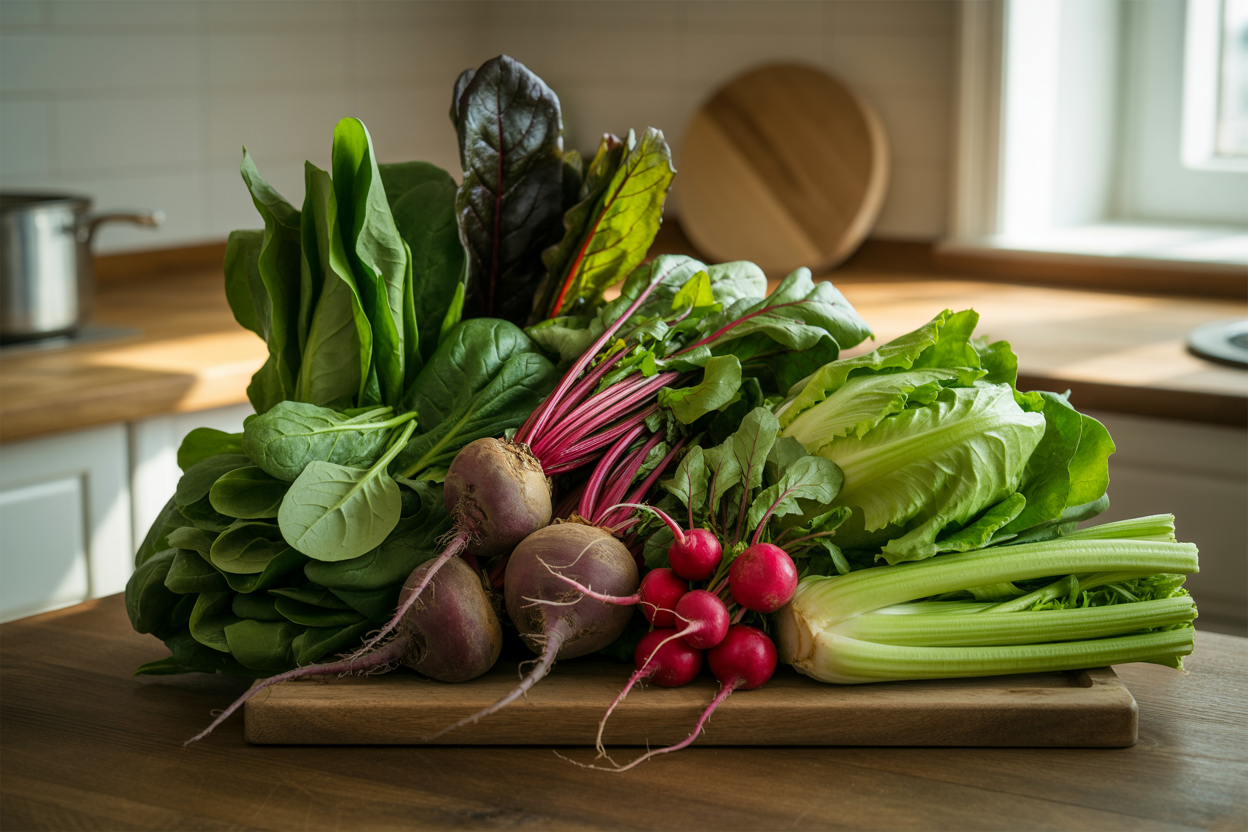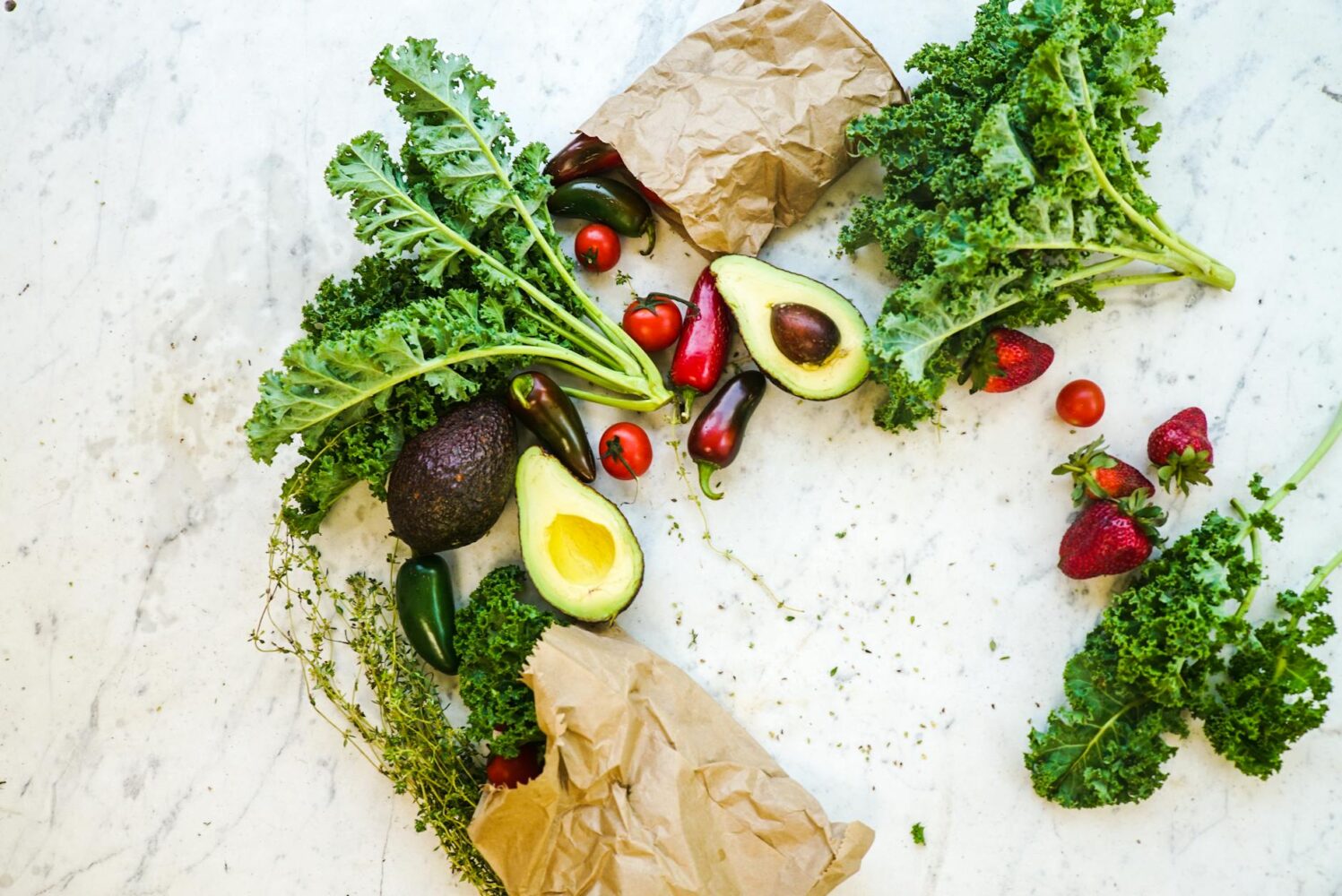Nitric oxide plays a crucial role in cardiovascular health, blood flow, and exercise performance, but many people don’t realize how simple dietary changes can naturally boost their levels. This guide is perfect for health-conscious individuals, fitness enthusiasts, and anyone wanting to improve their circulation and energy through food choices rather than supplements.
You’ll discover which everyday vegetables pack the most nitrates to fuel your body’s nitric oxide production. We’ll also explore how certain antioxidant-rich foods work behind the scenes to keep your nitric oxide levels steady and effective. Finally, you’ll learn smart food pairing strategies and get practical meal ideas that make boosting nitric oxide as easy as planning your weekly grocery list.
Understanding Nitric Oxide and Its Health Benefits

How nitric oxide improves blood circulation and cardiovascular health
Nitric oxide works like your body’s natural traffic controller for blood flow. When your blood vessels detect this simple molecule, they relax and widen – a process called vasodilation. Think of it like opening up more lanes on a highway during rush hour. Your blood can flow more freely, reducing the pressure on your arterial walls.
This relaxation effect directly impacts your blood pressure. Studies show that people with higher nitric oxide levels typically have healthier blood pressure readings. The molecule essentially tells your smooth muscle cells in blood vessel walls to chill out, which creates more space for blood to move through your circulatory system.
Your heart benefits big time from this improved circulation. When blood flows easier, your heart doesn’t have to work as hard to pump blood throughout your body. This reduces strain on your cardiac muscle and can help prevent the development of heart disease over time. Better circulation also means your organs and tissues get oxygen and nutrients more efficiently.
The role of nitric oxide in enhancing athletic performance and endurance
Athletes have been paying attention to nitric oxide for good reason – it can seriously boost your workout game. When your muscles get better blood flow during exercise, they receive more oxygen and nutrients right when they need them most. This translates to improved performance and the ability to push harder for longer periods.
The magic happens at the cellular level. Enhanced blood flow means your muscle fibers can work more efficiently and produce energy more effectively. You might notice you can complete that extra rep or run that additional mile when your nitric oxide levels are optimized.
Recovery time also gets a major upgrade. Better circulation means waste products like lactic acid get cleared out faster from your muscles after intense exercise. Your body can deliver repair nutrients more quickly to damaged muscle tissue, helping you bounce back faster between training sessions.
Many endurance athletes specifically focus on nitric oxide-boosting foods before competitions. The improved oxygen delivery can make the difference between hitting the wall and maintaining steady performance throughout long events.
Nitric oxide’s impact on cognitive function and brain health
Your brain is incredibly hungry for blood flow, consuming about 20% of your body’s total blood supply. Nitric oxide plays a crucial role in making sure your brain gets what it needs to function at its best. When cerebral blood vessels dilate properly, your brain tissue receives optimal oxygen and glucose delivery.
This enhanced circulation directly affects your mental performance. Better blood flow to brain regions involved in memory, attention, and executive function can lead to sharper thinking and improved cognitive abilities. Some research suggests that people with higher nitric oxide activity perform better on memory tests and problem-solving tasks.
The neuroprotective benefits extend beyond daily brain function. Adequate nitric oxide levels may help protect against age-related cognitive decline and neurodegenerative conditions. The molecule supports the health of blood vessels in your brain, potentially reducing the risk of vascular-related cognitive issues.
Sleep quality can also improve when your brain receives better circulation. Your brain clears out metabolic waste more effectively during sleep when blood flow is optimized, leading to more restorative rest and better next-day mental clarity.
Nitrate-Rich Vegetables That Naturally Boost Nitric Oxide

Dark leafy greens like spinach and arugula for maximum nitrate content
Spinach and arugula pack some of the highest nitrate levels you’ll find in the produce aisle. Fresh spinach contains approximately 250-280 mg of nitrates per 100 grams, making it one of nature’s most concentrated sources. The cool thing about spinach is how versatile it is – you can blend it into smoothies without even tasting it, toss it into pasta dishes, or simply sauté it with garlic for a quick side dish.
Arugula brings a peppery kick along with its impressive nitrate content of around 480 mg per 100 grams. This leafy green actually beats spinach in the nitrate department, and its bold flavor means a little goes a long way. Try mixing arugula into salads, using it as a pizza topping after cooking, or blending it into pesto for a nutrient-packed twist.
Other powerhouse dark leafy greens include kale, Swiss chard, and mustard greens. Baby spinach tends to have slightly higher nitrate concentrations than mature leaves, so grab those tender young greens when possible. The key is eating these vegetables regularly – your body converts their nitrates into nitric oxide most effectively when you maintain consistent intake rather than occasional large servings.
Beetroot and beet juice as powerful nitric oxide enhancers
Beetroot deserves special recognition as the superstar of nitric oxide boosting foods. Research consistently shows that beetroot and beet juice can significantly increase nitric oxide levels within hours of consumption. Fresh beetroot contains around 110-180 mg of nitrates per 100 grams, but here’s where it gets interesting – the concentrated form in beet juice delivers even higher amounts.
Studies have found that drinking beet juice can improve blood flow, lower blood pressure, and enhance exercise performance within 2-3 hours. The beautiful deep red color comes from betalains, compounds that work alongside nitrates to support cardiovascular health. Many athletes now drink beet juice before workouts to boost their performance naturally.
You can enjoy beetroot in multiple ways: roast whole beets and add them to salads, grate raw beets into slaws, or juice them fresh at home. If the earthy taste isn’t your favorite, try mixing beet juice with apple or carrot juice. Pickled beets also retain their nitrate content, though they’re higher in sodium.
Pre-made beet juice shots are convenient, but check labels since some products are diluted or contain added sugars. The most potent option is fresh beetroot juice made at home or from cold-pressed juice bars.
Celery and lettuce for easy daily nitrate intake
Celery makes nitrate intake almost effortless because of how easy it is to incorporate into daily meals. With about 80-100 mg of nitrates per 100 grams, celery might not top the charts, but its convenience factor is unmatched. You can munch on celery sticks as snacks, chop it into soups and stews, or juice it for a refreshing drink.
The leaves of celery actually contain higher nitrate concentrations than the stalks, so don’t toss them out. Celery leaves make excellent additions to salads, pestos, and herb mixes. Fresh celery juice has gained popularity as a health drink, and while it requires quite a bit of celery to make a full glass, the nitrate content adds up quickly.
Lettuce varieties offer another simple way to boost nitrates daily. Butter lettuce contains around 200 mg per 100 grams, while iceberg lettuce has about 65 mg. Romaine falls somewhere in the middle at roughly 110 mg per 100 grams. The darker and more colorful the lettuce, the higher the nitrate content typically is.
Creating large salads with mixed lettuce varieties, adding celery for crunch, and eating these combinations regularly provides steady nitrate intake without requiring dramatic dietary changes. These foods blend seamlessly into most eating patterns.
Radishes and turnips as underrated nitric oxide boosters
Radishes pack surprising nitrate power in their small, spicy packages. With approximately 200-300 mg of nitrates per 100 grams, these crunchy vegetables deliver significant bang for your buck. Their sharp, peppery flavor comes from natural compounds that may actually work synergistically with nitrates to support cardiovascular health.
You can eat radishes raw in salads, pickle them for tangy toppings, or roast them to mellow their bite. Different radish varieties offer varying nitrate levels – daikon radishes tend to be particularly high, while small red radishes are perfect for snacking. The greens from radishes are edible too and contain their own nitrate boost.
Turnips are another overlooked nitrate source, containing about 80-120 mg per 100 grams. These root vegetables become sweet and tender when cooked, making them perfect for roasting, mashing, or adding to soups. Turnip greens are actually more nutritious than the roots themselves, with higher nitrate content and additional vitamins.
Both radishes and turnips store well and are available year-round in most grocery stores. They’re budget-friendly options that can dramatically increase your nitrate intake without breaking the bank. Try grating raw radishes into slaws, roasting turnips with other root vegetables, or pickling both for long-lasting nitrate sources you can add to any meal.
Antioxidant Foods That Support Nitric Oxide Production

Pomegranates and berries for protecting existing nitric oxide
Pomegranates and berries act as powerful bodyguards for your nitric oxide, protecting it from damage that would otherwise reduce its effectiveness. These colorful fruits pack a serious punch with their antioxidant content, particularly anthocyanins and polyphenols that shield nitric oxide from oxidative stress.
Pomegranates contain unique compounds called ellagitannins that break down into ellagic acid in your body. This process creates a protective environment where nitric oxide can function optimally without being destroyed by free radicals. Research shows that drinking pomegranate juice regularly can increase nitric oxide availability by up to 50%.
Berries bring their own arsenal of protective compounds:
- Blueberries: Rich in pterostilbene and anthocyanins that prevent nitric oxide breakdown
- Blackberries: High in vitamin C and flavonoids that support nitric oxide synthesis
- Strawberries: Contain folate and vitamin C, essential cofactors for nitric oxide production
- Raspberries: Provide fiber and antioxidants that reduce inflammation affecting nitric oxide
The beauty of these fruits lies in their ability to work behind the scenes. While you’re enjoying their natural sweetness, they’re busy neutralizing harmful compounds that would otherwise attack your nitric oxide molecules. Adding a handful of mixed berries to your morning routine or enjoying pomegranate seeds as a snack provides ongoing protection for your cardiovascular system.
Dark chocolate and cocoa for flavonoid-rich nitric oxide support
Dark chocolate deserves its reputation as a heart-healthy treat, and its nitric oxide benefits explain why. The key lies in cocoa’s impressive flavonoid content, particularly epicatechin and catechin, which directly stimulate nitric oxide production in blood vessel walls.
When you eat high-quality dark chocolate (70% cacao or higher), these flavonoids get to work immediately. They activate an enzyme called nitric oxide synthase, which converts the amino acid L-arginine into nitric oxide. This process happens within hours of consumption, making dark chocolate one of the fastest-acting nitric oxide boosters you can find.
Cocoa flavonoids offer multiple benefits for nitric oxide:
| Flavonoid Type | Primary Benefit | Food Sources |
|---|---|---|
| Epicatechin | Direct NO production | Dark chocolate, cocoa powder |
| Catechin | Protects existing NO | Raw cacao, high-percentage dark chocolate |
| Procyanidins | Supports blood vessel health | Unsweetened cocoa products |
The dose matters here. Studies show that consuming 20-40 grams of dark chocolate daily provides optimal flavonoid levels without excessive calories. Raw cacao powder mixed into smoothies or sprinkled on yogurt delivers even higher concentrations of these beneficial compounds.
Choose chocolate with minimal processing and avoid milk chocolate, which dilutes the flavonoid content. The bitter taste you might initially resist actually signals higher concentrations of these powerful nitric oxide-supporting compounds.
Garlic and onions for sulfur compounds that enhance nitric oxide activity
Garlic and onions bring a different approach to nitric oxide support through their unique sulfur compounds. These pungent vegetables don’t directly produce nitric oxide, but they create ideal conditions for nitric oxide to work more effectively in your body.
Allicin, the compound responsible for garlic’s distinctive smell, converts to various sulfur compounds during digestion. These compounds help relax blood vessel walls, making it easier for nitric oxide to do its job of promoting healthy circulation. Fresh garlic provides the highest allicin content, but you need to crush or chop it and let it sit for 10 minutes before cooking to activate these beneficial compounds.
Onions contribute their own sulfur compounds, particularly quercetin and organosulfur compounds that work synergistically with nitric oxide. Red onions contain the highest levels of these beneficial compounds, followed by yellow and white varieties.
Ways to maximize sulfur compound benefits:
- Raw preparation: Crushing garlic releases maximum allicin
- Aged garlic extract: Provides stable sulfur compounds without the strong taste
- Combination cooking: Pairing garlic and onions amplifies their individual benefits
- Regular consumption: Daily intake maintains consistent sulfur compound levels
These vegetables work best when combined with other nitric oxide-supporting foods. The sulfur compounds help protect nitric oxide from being broken down too quickly, while also supporting overall cardiovascular health through their anti-inflammatory properties.
Simple Meal Ideas and Recipes for Daily Nitric Oxide Enhancement

Quick smoothie recipes featuring nitrate-rich ingredients
Start your day with a powerhouse smoothie packed with nitrate-rich vegetables and fruits. The Beet Berry Blast combines half a small cooked beetroot, one cup of spinach, mixed berries, banana, and coconut water for a refreshing morning boost. The earthy beet flavor gets masked by the sweet berries, making it surprisingly delicious.
Try the Green Goddess smoothie with two cups of fresh arugula, half an avocado, green apple, cucumber, lemon juice, and water. Arugula delivers high nitrate levels while the apple adds natural sweetness. The Rocket Fuel blend uses celery stalks, spinach, pineapple, ginger, and coconut water for a zesty kick that energizes your entire system.
For chocolate lovers, the Chocolate Beet smoothie combines cooked beetroot, cacao powder, banana, almond milk, and a touch of honey. You won’t even taste the beets, but your blood vessels will thank you for the nitrate boost.
Easy salad combinations that maximize nitric oxide potential
Building nitric oxide-boosting salads becomes simple when you know which ingredients pack the biggest punch. Start with a base of dark leafy greens like arugula, spinach, or kale, then layer on nitrate-rich vegetables for maximum benefit.
The Power Bowl features baby spinach, thinly sliced raw beets, chopped celery, walnuts, and pomegranate seeds. Top with grilled chicken or chickpeas for protein and dress with olive oil and balsamic vinegar.
Create a Mediterranean Nitrate Salad using arugula as the base, adding cherry tomatoes, cucumber, red onion, and olives. The combination of nitrates from arugula and antioxidants from tomatoes creates a synergistic effect for nitric oxide production.
The Garden Crunch mixes romaine lettuce with shredded raw beetroot, sliced radishes, carrots, and pumpkin seeds. This colorful combination provides both nitrates and the vitamin C needed to convert them effectively.
For a heartier option, try the Protein-Packed Nitrate Salad with mixed greens, grilled salmon, roasted beetroot, avocado, and hemp hearts. The omega-3 fatty acids from salmon support overall vascular health while the beetroot delivers nitrates.
Heart-healthy snacks that naturally boost nitric oxide levels
Smart snacking can keep your nitric oxide levels elevated throughout the day without requiring complicated preparation. Beetroot hummus made by blending cooked beetroot with traditional hummus ingredients creates a vibrant pink dip that pairs perfectly with raw vegetables.
Watermelon and feta bites combine the natural nitrates in watermelon with the satisfying saltiness of cheese. Simply cube fresh watermelon, top with crumbled feta, and add a mint leaf for an elegant afternoon snack.
Keep nitrate-rich vegetable chips on hand by dehydrating thinly sliced beetroot, sweet potato, or kale. These crunchy alternatives to regular chips provide concentrated nitrates without added oils or preservatives.
Dark chocolate covered pomegranate seeds offer a double nitric oxide boost. The pomegranate provides nitrates while dark chocolate contains flavonoids that support nitric oxide production. Store-bought versions work fine, or make your own by drizzling melted dark chocolate over dried pomegranate arils.
Spinach and sun-dried tomato pinwheels use whole wheat tortillas spread with cream cheese, then layered with fresh spinach and sun-dried tomatoes. Roll tightly and slice into rounds for an easy grab-and-go snack that delivers nitrates and antioxidants.
Pre-workout meals designed for enhanced nitric oxide production
Timing your nitrate-rich meals before exercise can significantly enhance performance and endurance. The key lies in consuming these foods 2-3 hours before your workout to allow for proper nitrate conversion.
The Athlete’s Bowl combines quinoa, roasted beetroot, grilled chicken, and steamed broccoli. This balanced meal provides sustained energy while delivering nitrates that improve oxygen delivery to working muscles. Season with herbs and a light vinaigrette for added flavor.
Pre-Workout Power Smoothie blends beetroot juice, banana, Greek yogurt, and a handful of spinach. The natural sugars provide quick energy while the nitrates prepare your cardiovascular system for increased demands. Add a scoop of plant-based protein powder if you prefer more substantial fuel.
Create Nitrate-Loaded Overnight Oats by mixing rolled oats with almond milk, chia seeds, and grated raw beetroot. Let it sit overnight, then top with sliced banana and chopped walnuts in the morning. This combination provides complex carbohydrates for sustained energy and nitrates for improved blood flow.
The Endurance Toast features whole grain bread topped with avocado, sliced radishes, and a sprinkle of sea salt. The healthy fats support hormone production while radishes contribute nitrates and a satisfying crunch. This light meal won’t weigh you down but still provides the nutrients your body needs for optimal performance.
For evening workouts, try Arugula Pesto Pasta made with whole wheat pasta, homemade arugula pesto, cherry tomatoes, and pine nuts. The peppery arugula delivers high nitrate content while the complex carbohydrates fuel your training session.

Getting more nitric oxide into your daily routine doesn’t have to be complicated or expensive. By adding nitrate-rich vegetables like beets, spinach, and arugula to your meals, along with antioxidant-packed foods like berries and dark chocolate, you’re giving your body the building blocks it needs for better circulation, energy, and overall health. The real magic happens when you combine these foods strategically – think spinach salads with citrus dressing or beetroot smoothies with vitamin C-rich fruits.
Start small by swapping out one regular snack for a handful of nuts or adding some leafy greens to your next meal. Your heart, muscles, and energy levels will thank you for making these simple changes. The foods that boost nitric oxide are already sitting in most grocery stores, waiting to become part of your everyday eating habits.













